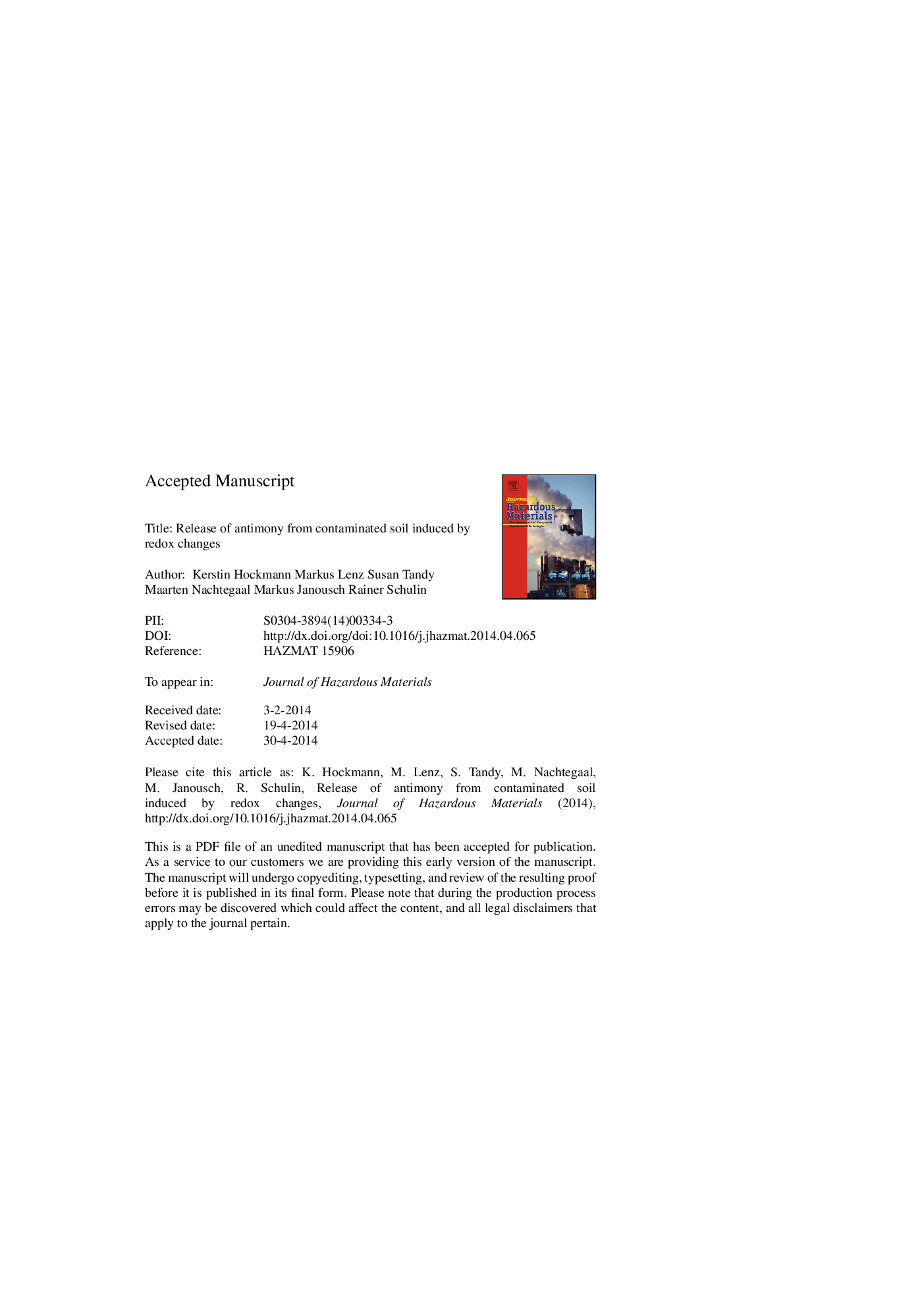| Article ID | Journal | Published Year | Pages | File Type |
|---|---|---|---|---|
| 576788 | Journal of Hazardous Materials | 2014 | 31 Pages |
Abstract
Soil contamination by toxic antimony (Sb) released from corroding ammunition has become an issue of public concern in various countries. Many of these soils are at least occasionally subject to waterlogging; yet mechanisms controlling Sb mobility under anaerobic conditions are still poorly understood. We investigated Sb concentration and speciation dynamics in a calcareous shooting range soil in terms of changing redox conditions using microcosm experiments. The transition to reducing conditions invoked by indigenous microbial activity at first led to the immobilization of Sb, as Sb(V) was converted to Sb(III), which binds more extensively to iron (hydr)oxides. When reducing conditions continued, the previously sorbed Sb(III) was gradually released into solution due to reductive dissolution of the iron (hydr)oxides. Speciation measurements in the solid phase by Sb K-edge XANES spectroscopy and in the soil solution by liquid chromatography ICP-MS provided the first evidence that Sb(III) predominated at low redox conditions (Eh <0.05Â V) in both phases. The results show that Sb(V) is less stable in reducing environments than commonly assumed. Given that Sb(III) is generally more toxic than Sb(V), the mobilization of Sb(III) under Fe-reducing conditions may significantly increase (eco)toxicological risks arising from Sb-contaminated soils that are prone to flooding or waterlogging.
Related Topics
Physical Sciences and Engineering
Chemical Engineering
Chemical Health and Safety
Authors
Kerstin Hockmann, Markus Lenz, Susan Tandy, Maarten Nachtegaal, Markus Janousch, Rainer Schulin,
